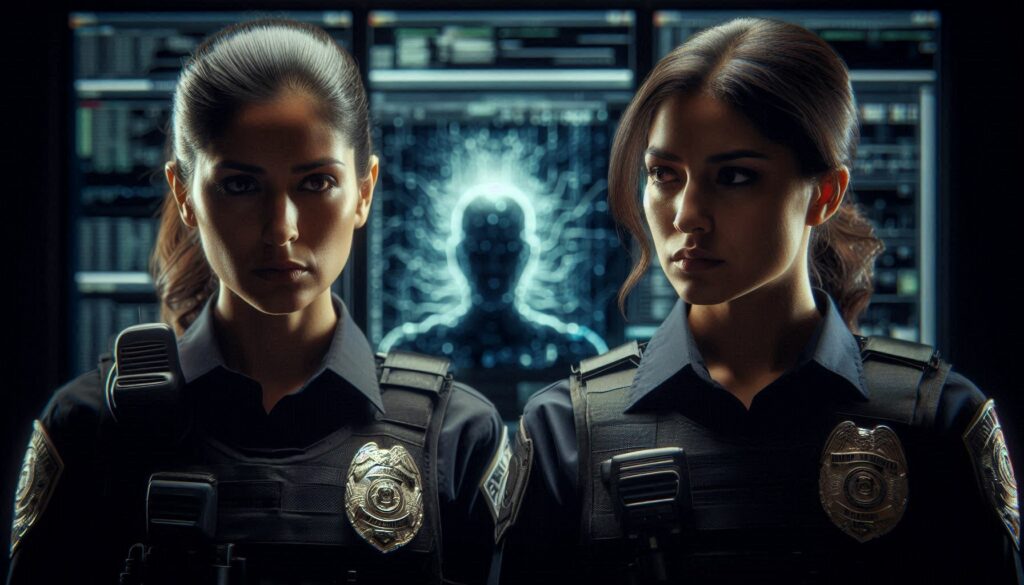
AI CERTS
7 months ago
How AI is Transforming Police Reports in the U.S.: The Rise of AI-Powered Drafting Tools
Across the U.S., artificial intelligence is increasingly playing a role in the way police officers create reports. In several California cities, including East Palo Alto and Fresno, police departments have begun utilizing Axon’s Draft One an AI-powered tool designed to help officers streamline the drafting of incident reports. While AI promises greater speed and efficiency, its integration into law enforcement has sparked significant concerns about the potential risks of relying too heavily on technology for critical aspects of the criminal justice system.

Recently, Officer Wendy Venegas of the East Palo Alto Police Department responded to a call involving a domestic disturbance between a teenage girl, her boyfriend, and the girl’s father. After interviewing everyone involved, Venegas turned to Draft One, which used her body camera footage to generate a detailed draft of the incident report within seconds. For Venegas, the AI tool is a helpful assistant, especially after long patrols. “When you don’t know what words you’re trying to write, and then you just look, and you’re like, ‘Oh, that’s exactly what I was thinking!’ That’s the best,” she said.
Yet, despite its usefulness, Venegas acknowledged that the system has its limitations. Draft One, for instance, only understands English, leading to occasional errors in identifying who said what, especially in bilingual scenarios. This highlights one of the challenges AI still faces when dealing with the nuances of human interactions.
AI's Growing Role in Law Enforcement
Axon, best known for its development of body cameras and tasers, has positioned Draft One as a solution for police departments struggling with understaffing and officer burnout. According to Rick Smith, Axon’s founder, the AI tool can free up to 25% of an officer’s time spent on report writing, allowing them to dedicate more hours to patrols and investigations. For departments like East Palo Alto, which is short by eight officers, this increased efficiency could be crucial.
However the adoption of AI tools like Draft One raises broader questions about the role of technology in law enforcement. Andrew Ferguson, a criminal law professor at American University, warns that AI-generated reports, if not carefully managed, could impact the fairness and integrity of the criminal justice process. “We forget that that document plays a central role in decisions that change people’s lives,” Ferguson said. Judges, prosecutors, and defense attorneys all rely heavily on the initial police reports to make critical decisions, such as whether to file charges or grant bail.
The potential for AI-generated bias or errors could have serious ramifications. For example, subtle inaccuracies in reports could affect the outcome of a case, and the ability to cross-examine officers in court may be undermined if they claim AI made the mistake. Critics like Ferguson argue that while AI can be an efficient tool, its use in such high-stakes scenarios must be carefully regulated and scrutinized.
Efficiency vs. Accuracy: The Debate Over AI-Generated Reports
For police departments grappling with understaffing, the efficiency AI offers is a major selling point. In the nearby city of Campbell, Captain Ian White reported that Draft One saved officers over 50 hours of report-writing time in just one month. Similarly, officers in Fort Collins, Colorado, found that reports drafted by the AI software took an average of eight minutes to complete, compared to the 23 minutes it took to write reports manually.
However, an independent study published in the Journal of Experimental Criminology did not support these findings. Researchers from the University of South Carolina conducted a randomized trial at a New Hampshire police department and found no significant time savings when officers used Draft One. The study’s lead researcher, Ian Adams, suggested that while time savings may not be evident, other potential benefits like increased report accuracy could still make AI tools valuable in the long run.
Officer Venegas also noted that Draft One has influenced her behavior in the field. Because the software relies heavily on body camera audio, she now makes a point to verbalize details as they occur during an incident a broken mirror, and a bloody knife on the floor so that the AI can capture these critical details for the report. This verbal documentation, Venegas said, ensures the AI-generated narrative is as comprehensive as possible.
The Future of AI in Policing
Despite its potential, the use of AI in law enforcement is not without controversy. Civil rights organizations like the American Civil Liberties Union (ACLU) have raised concerns that police officers may misuse real-time narration during incidents to manipulate outcomes, such as shouting “stop resisting” to justify the use of force, even when individuals are complying.
Axon product designer Noah Spitzer-Williams acknowledged the risk but argued that Draft One’s design incentivizes officers to be more transparent during their interactions, explaining what they are doing and why. He also highlighted research that showed AI-generated reports tend to use less biased language compared to those written entirely by officers.
In response to concerns about the accuracy of AI-generated reports, Axon has incorporated safeguards into Draft One’s process. Officers must review and edit each report before finalizing it, and the software requires officers to acknowledge that the report accurately reflects their recollection of events. This ensures accountability and encourages officers to take ownership of the final product, rather than attributing errors to the AI.
A Tool, Not a Replacement
In the evolving world of law enforcement, AI tools like Draft One may offer a glimpse into the future of policing. By assisting with the administrative burden of report writing, AI could free up officers to spend more time protecting their communities. However, as AI’s role expands, law enforcement agencies must tread carefully to ensure that these tools are used responsibly and that human oversight remains at the core of the justice system.
As Officer Venegas wrapped up her AI-generated report, she reflected on the tool's potential: “If this AI is going to speed up the reports but without compromising accuracy, I think it’s a win.” But for others, the jury is still out on whether AI can truly transform police work for the better or whether it will introduce a new set of challenges into an already complex system.
Source : How artificial intelligence is changing the reports US police write